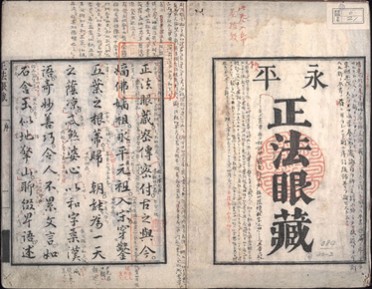This week: the advent of the medieval era brings with it new strands of Buddhism that will radically remake the image of the religion from an aristocratic faith to a distinctly Japanese one. So, how do the wildly different beliefs of Zen, Pure Land, and Nichiren Buddhism all grow out of the same moment in religious history?
Sources
Osumi, Kazuo. “Buddhism in the Kamakura Period” in The Cambridge History of Japan, Vol 3: Medieval Japan
Bodiford, William M. “Medieval Religion” in Japan Emerging: Premodern History to 1850
Faure, Bernard. Visions of Power: Imagining Medieval Japanese Buddhism
Images
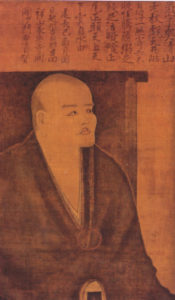
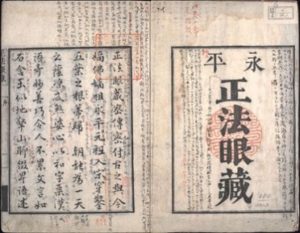

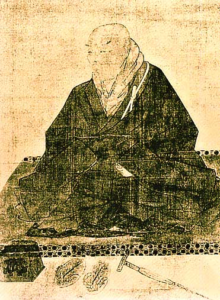
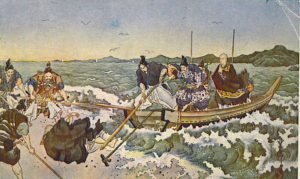
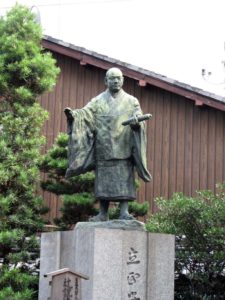
Transcript
Today, we’re going to put a brief pin in the rise of warrior government in Japan to talk about a massive change in the world of Japanese religion–the effects of which profoundly reshaped the religious map of the country.
Up until this point, Buddhism–one of the world’s foremost religions, spanning the Asian continent and with a history going back (at the point we’ve arrived at chronologically) a millennium and a half–was mostly an elite religion in Japan.
As we’ve covered, there were attempts to missionize to the Japanese masses, but these were few and far between. And while the two dominant sects of Buddhism in the country by the time of the Genpei War–Tendai and Shingon–rejected the notion that one had to be born into a high social status to attain enlightenment, their focus on esoteric secret practices that most working people would not have the time or money for meant that Buddhism still remained a largely elite religion.
But over the course of what we might call the early medieval era in Japan, three new sects would arrive from China or emerge domestically that would challenge the elite grip on Buddhism–and begin the practice of democratizing the faith and spreading its influence into wider Japanese society.
These three sects are, in order, Zen, Pure Land, and Nichiren Buddhism, and today is going to be all about walking through the history and importance of each.
We’ll start with Zen–a sect so strongly associated with Japan and Japanese identity that it is almost certainly the first thing people think of when they think of “Japanese Buddhism.” And yet, Zen is unique among the three sects we’re discussing today in not being local; its origins are Chinese.
The idea of Zen as fundamentally Japanese is very modern, based on a concerted effort during the 20th century among Japanese Zen practitioners like DT Suzuki to spread awareness of Zen in the US and Europe. By comparison, the practitioners of Ch’an, the Chinese progenitors of Zen, never really got their PR together in the same way–though to be fair, the 20th century was rather rough for Chinese religious institutions in general so they had other things to keep them busy, I’m sure.
Anywho, Ch’an and Zen are Chinese and Japanese readings of the same character, which in turn is a contraction of a longer term: chan2na4/zenna. That word is derived from dhyanna, a word from Sanskrit, the language of Indian Buddhism (and really Indian philosophy and religion more broadly). It means “meditation.”
The origins of Zen (which is just the term I’m going to use going forward) are a bit historically murky–the sect began to emerge with a distinctive identity some time around the 5th century, during the periods of war and chaos that predated the rise of China’s Sui and Tang Dynasties. Its origins are associated with a quasi-mythic figure named Bodhidharma (Daruma in Japanese), a monk who came from the West to spread Buddhism in China.
He’s often thought to be either Persian or Afghani, and is depicted with a big nose, bushy eyebrows, and blue eyes–and an intense temper. In particular, Bodhidharma is famous for his impatience with elaborate trappings in Buddhist practice–and an emphasis on simple yet rigorous meditative practice.
Bodhidharma would take several Chinese students during his years in China, the most famous of whom was a monk named Huike. There are all kinds of great stories about Bodhidharma and Huike–for example, Bodhidharma supposedly initially refused to take Huike as a student, until Huike cut his own arm off to prove his sincerity.
To be fair, he was just following Bodhidharma’s example; one of the many legends around Bodhidharma himself is that he cut his own eyelids off to prevent himself from falling asleep while meditating, and that the first tea leaves grew from the discarded bits.
Huike would eventually be Bodhidharma’s chosen successor, establishing a lineage of Zen patriarchs. One of the core ideas of Zen, you see, is dharma transmission–the idea being that Zen is so complex as an idea that you can only learn it from a master, rather than by say reading about it or practicing on your own. Once you have attained enlightenment, you are marked as having received the transmission of the dharma–the teaching–of Zen, which entitles you to take your own students and serves to authenticate you, so to speak, as a practitioner. These lineages can get complicated, particularly once Zen started to grow and fracture into competing lineages–but they all trace back to Bodhidharma and his six immediate successors (the six patriarchs of Zen) and from there back to Siddhartha Gautama, the Buddha himself. In essence, they create a sort of Buddhist geneaelogy, allowing you to trace your teaching all the way back to the origins of Buddhism.
Though I do want to note here that there are a lot of historical questions around Bodhidharma and his successors, and not a lot of sources about them–and what we do have describes some pretty unbelievable stuff. So the historicity of a lot of his is hotly debated. All we can really say for certain is that Zen emerged from a combination of Buddhist ideas brought by monks like Bodhidharma and existing Chinese religious traditions, most notably the radical skepticism associated with Daoism.
Regardless, by the 700s Zen had emerged onto the Chinese religious stage as one of a series of competing Buddhist sects–the Tang dynasty being a real period of flourishing for Buddhism in China. Which takes us, I suppose, to the question of what differentiates Zen from other forms of Buddhism.
As the root of the name in the word for “meditation” implies, Zen as a discipline is primarily focused on intense meditative practice. What form this meditation takes can vary a great deal based on teaching and lineage, but the emphasis is always on rigorous mental discipline that is cultivated internally.
That mental discipline, in turn, is geared towards radically re-imagining your own relationship to the world. Zen is radically iconoclastic, a fancy way of saying it rejects a lot of categories and ideas we take as givens. This includes attacking notions like the idea that you and I are separate beings, or that there is any line we can clearly draw between the two of us–or between you and the context you exist in.
Rather than discrete individuals or specific phenomena, Zen imagines the world as interconnected nodes of cause and effect–each of us acting on and being acted upon by others, both changing in response to our circumstances and being changed by them.
This realization in turn leads to the understanding that all of us already have a fundamental Buddha nature–that we have the potential of Buddhas within us, connected as we are to the Buddhas (and everything else) by that web of cause and effect. Enlightenment, then, is not really something you attain, but something you realize you already have.
All of this relies, again, on meditation–rejecting the complex ritual trappings of other forms of Buddhism.
Hopefully this gives you some idea of the complexity of the belief system–and I should note here that I am trying to explain a sect of Buddhism that is not only complicated, but in many ways resistant to intellectual analysis (since that analysis tends to reinforce the categorical distinctions Zen sees as irrelevant), and which bills itself as being beyond transmission by words (a fundamentally flawed medium for understanding such complex notions). And I’m trying to explain it in less than five minutes of podcast time, so I am simplifying a LOT.
I hope any Zen practitioners listening are not offended by my attempts to do justice to a fascinating and absolutely mindbending intellectual tradition–and really, if you’re at all interested in Buddhism, I encourage you to read more about Zen in general. It’s very interesting!
Japanese monks, who often made pilgrimages to the Asian mainland to study Buddhism with their continental counterparts, had already encountered Zen by this point, but the reception had been decidedly mixed; the 9th century monk Ennin, upon meeting a group of Zen monastics, called them ‘extremely unruly men at heart”, probably a comment upon the gleeful rejection of much of the doctrine of other Buddhist schools.
Still, Ennin’s reaction was not universal; for example Saicho, the founding figure of Japan’s Tendai sect, studied Zen while in China in the early 800s, and incorporated some of its teachings into Tendai–in later years, more unorthodox Tendai monks would attempt to incorporate Zen’s ideas around universal Buddha nature into Tendai doctrine, though they would never succeed in getting the sect’s more conservative leadership to go along with it.
And at any rate, starting in 894 the Kyoto imperial court began to drastically curtail its official missions to China both because of the expense and the faltering power of the Tang dynasty (which collapsed just 13 years later). Without those missions, there was far less contact between the Japanese and Chinese Buddhist establishments.
It was not until the age of the Minamoto/Hojo rulers of the Kamakura shogunate that Zen would find its footing in Japan. In part, that was due to a receptive religious establishment in Japan; in the intervening centuries, the growing wealth of the major temples had led to widespread corruption, with abbotts and monks living more like aristocrats than monastics. This, in combination with the violence of the late Heian era–all those wars we spent so much time talking about–led to a growing consensus that Japan had entered an age of mappou: the decline of Buddhist law.
And here we need to talk a bit about Buddhist theology more broadly. A very simplified, though not totally inaccurate reading of Buddhism would be that it’s about the idea that nothing in the world is permanent–including Buddhism itself. In this view, the early years of Buddhism were a period of shoubou–the “correct law”, when the Buddha’s disciples were able to correctly transmit his teachings. However, things get distorted over time (as anyone who has ever played the game telephone knows), and over the years Buddhism eventually transitioned to an age of zouhou–the semblance of the law, where teachings had been modified to an extent but everything was still more or less on the right track.
However, the corruption of the Buddhist establishment and the strife of Japanese politics clearly indicated another transition to the final age–mappou, or declining law. By this time, the teachings of the Buddha had been so mangled that salvation by traditional means was no longer possible.
This degeneracy would eventually be dealt with; Mahayana sutras promised the coming of a new Buddha who would begin the cycle again, known in Sanskrit as Maitreya (Miroku in Japanese). But in the meantime, aspirants for enlightenment would have to get creative in their methods, and be open to new ideas.
And so many a monk of Kamakura Japan went to the natural place to look for those ideas: China, which after all was the center of Mahayana Buddhism. And what they found was that over the past few centuries, it was Ch’an–Zen, in other words–that had come to dominate China’s religious landscape. The sect had hugely outcompeted pretty much all comers, and was far and away the most vital and dominant part of the nation’s religious landscape 1000 years ago.
Its intellectual novelty was impressive; the monks engaged in vigorous and lively debate, as well as the study of complex gong’an, or kouan in Japanese–short but enormously complex anecdotes intended to guide someone towards enlightenment in an abstract way.
Ch’an monks also engaged in secular artistic and cultural pursuits like painting or poetry, both as a way to express their religious views via a new medium and as a way to connect with the secular world.
All of this was deeply appealing, and so starting in the mid-1100s with monks like Eisai and Kakua, Japanese Buddhist monks began trying to take what they’d learned back home. Eisai and Kakua were both trained originally as Tendai sect monks and hoped not to found a new sect but to incorporate Zen teachings into Tendai in order to revitalize it–however, they found the establishment of Tendai to be hostile to these attempted innovations. And here, the paths of the two men diverged substantially.
Kakua was apparently a good showman–he was invited to speak to emperor Takakura about what he’d learned, but responded to Takakura’s questions about Zen theology by pulling out a flute and playing a melody, amusing but not likely to get you very far. He was, shockingly, not successful in establishing an enduring lineage or winning students.
Eisai, on the other hand, left Kyoto and went east; he’d received an invitation from none other than Hojo Masako to share what he’d learned in China in Kamakura among the eastern warriors, and there found a very receptive audience. Going forward, much of the elite of Japan’s warrior class would have at least some interest in Eisai’s branch of Zen–the Linji school, or Rinzai in Japanese–and with Masako’s patronage Eisai was eventually able to go back to Kyoto and found his own temple, Kenninji, to serve as the headquarters of his new sect.
Rinzai would continue to be heavily patronized by the elite of the samurai class for centuries.
The other figure closely associated with early Zen is Dogen, a generation or so younger than Eisai and also originally a Tendai sect monk. Not satisfied with Tendai doctrines, he would eventually relocate to Kenninji to study with Eisai, and in 1223 would go to China alongside Eisai’s seniormost student Myouzen. While there, he would connect with an elderly and austere master of the Caodong school (a separate Zen lineage from Eisai’s Linji/Rinzai lineage) named Rujing. Dogen would spend five years studying with Rujing, until his master was on his deathbed. Just before his death, Rujing recognized Dogen’s enlightenment and transmitted the teachings of the Caodong school to him.
Upon his return to Japan, Dogen would eventually leave Kenninji and the Rinzai sect, which he saw as having swerved away from a singleminded focus on meditation. His own sect–known as Soto in Japanese–would instead find its base in remote Echizen, where Dogen would relocate and found Eiheiji.
Soto would never attain the same level of patronage and recognition as Rinzai, but that would turn out to be one of its biggest strengths. A few episodes down the line, we’ll see Rinzai lose its exclusive elite patronage, which would in turn see the sect’s following shrink dramatically. Soto’s support was more organic, for lack of a better term, and so it never suffered the same setbacks–and is today the largest of the Zen sects.
Now, there’s a lot more we could say about the relationship between Rinzai and Soto, but we have two other new denominations to get to and I want to do them justice too!
Which brings us to Pure Land Buddhism, and to the figure of Hounen.
Like Dogen and Eisai before him, Hounen was originally a monk of Enryakuji–the enormously wealthy Tendai sect temple atop Mt. Hiei just northeast of Kyoto, which became something of a hotbed of religious reformism during this period. Hounen was from a generation or so earlier than them, however; he was born in the 1130s to a provincial family in Mimasaka province, now northern Okyama prefecture on the Western end of Honshu. This was, to put it unkindly, the middle of nowhere. Mimasaka is a rural area far from the center of power at Kyoto, and the only way for someone from a family so removed from the aristocracy to break into the nation’s elite was via the priesthood–this was exactly the route Hounen took, after his father’s death in a political dispute caused him to turn to religion.
Hounen spent 30 years at Mt. Hiei, primarily as a student of one of its more oddball monks–Eikuu, a master famous for distancing himself from the intense politics of the wealthy temple and living on a more isolated part of Mt Hiei, and for expounding somewhat unorthodox doctrines. Hounen was drawn to Eiku, but also received a more traditional education in standard Tendai sect theology as well as studying with the Hossou sect monks of Nara.
What really clicked with him, however, was an experience about 30 years into his monastic career, when his studies brought him to a text called the Guān wúliàngshòu jīng shū, or Kanmuryoujukyou in Japanese–the Commentary on the Contemplation Sutra, by the 7th century Chinese monk Shandao.
Shandao was an exponent of a Buddhist tradition known as Amidism, a different sort of answer to the problem of mappou which centers the figure of the Amida Buddha.
Amida, or Amitabha in Sanskrit, is one of the many Buddhas of the Buddhist tradition, who during his journey to enlightenment made 48 vows related to his mission: to save all sentient beings from the cycle of death and rebirth before leaving that cycle and attaining nirvana himself.
That mission would involve constructing a pure land (sometimes also called a Buddha field) free from the corruption of this world where adherents to his teachings could learn directly from him.
Of these vows, the 18th one is the most important–which is why it’s called the principal vow, or hongan in Japanese. That vow states that , “if the beings of the ten quarters who after having heard my name, and thus awakened their highest faith and aspiration of re-birth in that country of mine, even they have recollected such a thought for ten times only, they are destinated to be born there”–in other words, faith in Amida’s vows alone is enough to be reborn in the pure land. The 19th vow, meanwhile, promises that Amida will appear at the moment of death to said faithful, to usher them along to this pure land.
All of this is explained in the original Contemplation Sutra; the text Hounen read was Shandao’s commentary on this sutra. Shandao had read out from Amida’s vows that the only thing necessary for rebirth in Amida’s pure land was an expression of faith–he codified that expression as the phrase “I take refuge in the Amida Buddha.”
Inspired by Shandao’s teachings, Hounen began to expound the same doctrine–that this simple declaration of faith, called the nenbutsu and directly transliterated from the original Chinese as “namu Amida Butsu”–was the key to enlightenment.
Earlier sects like Tendai had incorporated bits of Amidist/Pure Land teachings into their own doctrine, but Hounen’s formulation was different–he said that this was the ONLY thing necessary for attaining enlightenment.
And I think it can be genuinely challenging to wrap your head around just how revolutionary this is. Even the doctrinal shifts of Tendai and Shingon, with their emphasis on the idea that anyone could attain enlightenment, still thought enlightenment had to be sought through an intense religious lifestyle that was in practice only open to the elite.
Honen’s simple chant, by contrast, could be done by anyone; you didn’t even have to be literate enough to read a sutra, let alone joining a monastery. You just had to know the words and chant them sincerely.
Obviously, this teaching caused a bit of a stir, and Honen spent a good chunk of his career defending himself from attacks by his monastic colleagues, who accused him of (in essence) oversimplifying Buddhism to the point of it being unrecognizable. Hounen defended himself in several written works, in which he argued that Buddhist doctrine really was that simple. Amida had made his vow to save all who had faith, and understanding Amida’s compassion and having faith in it was really all you had to do. All other Buddhist doctrine was fundamentally an unnecessary distraction from this core idea–and indeed, in an age of mappo, dangerous, since it was no longer possible to attain salvation by your own efforts in such a degenerate world.
Hounen found his most devote follower in a member of the lower Kyoto aristocracy by the name of Shinran, about 30 years his junior, born to a minor offshoot of the Fujiwara.
His parents died when he was young, inspiring Shinran to an interest in religion as he wished to know what happens after death. This in turn brought him where else but Mt. Hiei, but he was not satisfied with Tendai sect doctrine. In 1201, he began a period of religious seclusion that ended in a nighttime revelation–which in turn brought him to Hounen. Shinran became (according to himself) one of Hounen’s most single-minded and devoted disciples.
How close their relationship actually was is a matter of some historiographical dispute. In 1207, Honen expelled one of his other disciples, named Kousai, for advocating a doctrine too extreme even for him (that one need only recite the nenbutsu once to be saved), and asked his followers to sign a seven-article pledge avoiding conduct that would scandalize the other Buddhist sects. Shinran’s name appears on it, but not towards the top with the rest of the inner circle–instead, he’s somewhere in the middle.
Regardless, the relationship would not be a long one; in 1207, Kyoto would be wracked with scandal when two of Honen’s followers were accused of taking mistresses (against the monastic vow of celibacy), telling them that it was a nonissue because of the salvatory power of the nenbutsu. The scandal was big enough that the Kamakura shogunate itself stepped in, taking a break from a fun stretch of intra-family rivalry to ban nenbutsu practice in Kyoto and exile all of Honen’s followers, including Shinran, to different provinces.
Honen and Shinran would never meet again; when the exile order was lifted, Honen would return to Kyoto and die there in 1212, while Shinran would never go back. Instead, he would remain in the countryside, first in his destination for exile–Echigo province, or modern Niigata prefecture on the Japan Sea Coast, and then after he was pardoned Hitachi province (more or less present Ibaraki Prefecture north of Tokyo).
In the countryside, Shinran continued to prostelytize for his pure land teachings, and in a very unorthodox way. He stopped describing himself as a monk, and openly took a wife and lived as a humble peasant farmer while also preaching to the local population–in essence, trying to remove any separation between himself and his followers, and embracing the idea that the nenbutsu was the only valid path to salvation (and thus that the trappings of monastic life were unnecessary or even an active hindrance).
Shinran’s theology also began to differ in small but key ways from that of Honen. Honen treated the nenbutsu as, in essence, a repetitive religious ritual one must perform to attain salvation–that, in essence, the act of invoking the nenbutsu would slowly accumulate merit towards your future salvation.
For Shinran, the merits of the nenbutsu were more immediate; he believed that the first time you uttered it with real faith, your salvation was assured, and that from this point on any future recitation of the nenbutsu was an expression of gratitude for salvation already achieved–and a reflection of your calm state of mind in this world, knowing that you were in essence already saved.
Basically, your faith in Amida alone is enough; enlightenment itself isn’t really necessary, because you WILL be reborn in Amida’s pure land and will obviously attain enlightenment there.
Shinran also extended Honen’s belief in mappo towards a conclusion that humans were fundamentally incapable of anything but negative actions–thus, in an age of mappo, faith in Amida was the only path to enlightenment, as other efforts were insufficient.
Someone with a better background in comparative theology could probably put together an interesting comparison of this attitude with, say, Calvinism–but that’s not really anywhere close to my wheelhouse.
Shinran would eventually return to Kyoto after 30 years, and spend the final part of his life there–remaining in contact with his disciples in the Kanto, but steadfastly refusing their attempts to prop him up as the leader of a sect and insisting on the equality of all before Amida.
Despire his disinterest in sectarianism, Shinran’s later followers and disciples would eventually morph into a Buddhist sect all their own. Honen’s followers would come to call themselves members of Joudoshu, or the Pure Land Sect–Shinran’s, in a clever piece of branding, would come to call themselves Jodo Shinshu, or the True Pure Land Sect.
Both of these sects are still around today–but the True Pure Land Sect is far and away the larger.
Both sects of Pure Land Buddhism, but especially the True Pure Land sect, were remarkable for their efforts to “democratize” Buddhism by making salvation attainable by all–and were thus very popular outside the educated elite.
The same was true for our final subject today: Nichiren Buddhism, named after the monk who founded it. Nichiren is a somewhat later figure than our other subjects today, born into a samurai family in 1222 in Awa Province (now a part of Chiba prefecture on the eastern end of the greater Tokyo metro area).
That’s important for his history in a lot of ways, because by the time Nichiren was an adult the advent of the Zen and Pure Land traditions had done a lot to spread Buddhist ideas outside of the aristocracy (particularly among wealthier farmers and the lower levels of the samurai class), and to break the religious monopolies of the great temples of Kyoto and Nara. That groundwork, in turn, would make for fertile ground for Nichiren.
Nichiren would enter a local temple as a child that belonged to the Tendai sect, and before long he would come to stand out for his intellectual acumen and deep interest in religion. The monks thus arranged for the boy to go to Kyoto to study at where else but Enryakuji atop Mt. Hiei, the headquarters of the sect and a natural destination for such a promising child.
However, before long Nichiren’s interest began to diverge from other Tendai sect monks. He was not interested in other worldly salvation but in a “this worldly” salvation that would spiritually aid both individuals and all of Japan as a collective. This interest dovetailed nicely with Amidism and Pure Land Buddhism, and initially he was drawn to this still fairly novel sect. However, by his own latter recollection he began to doubt the effectiveness of the nenbutsu practice, and sought insights by means of a deep textual study of the sutras–the classic holy texts of Buddhism.
And here, Nichiren eventually found a candidate for this salvation in a religious text known as the Rengekyo, or Lotus Sutra. Now, the Lotus Sutra is an enormously difficult text to do justice to–just for context, I am the kind of person who reads the Talmud on occasion out of pure personal interest and I find the Lotus Sutra nigh impenetrable.
To be fair, I have some cultural context for the former that I don’t for the latter, but even so–I think that gives some idea of how hard a text it is.
Broadly, the Lotus Sutra is an exploration of various methods of salvation and how they can be attained–and how this all fits into the wider cosmology of Mahayana Buddhism.
Nichiren found in the text an absolute explanation for the nature of the universe and the path to salvation within it. Eventually, he came to believe the power of the text was such that title itself–the Lotus sutra–was possessed of a kind of power, such that chanting praise of its name: Namu Myouhou Rengekyou, roughly I take refuge in the Mystic Dharma of the Lotus Sutra, was a pathway to enlightenment and this worldly salvation.
Nichiren came to view himself as almost a divinely ordained prophet sent to carry this vision of Lotus Sutra-centric Buddhism through Japan–and took it upon himself to publicly and very forcefully attack competing sects of Buddhism like Zen, Tendai, Shingon, and Pure Land for “distorting” the truth and harming the people as a result.
He would eventually make his way to Kamakura to attempt to convince the shogunate to accept his new interpretation of Buddhism, which by this point had become highly syncretic–incorporating aspects of Shinto, particularly the notion that the gods of Japan were also gods of the correct Buddhist path (which was to say, his path). If the shogunate did not accept his teaching, he predicted dire disasters to come.
Needless to say, this vision of disaster–and of radically upending the religious order of the country–did not make Nichiren a lot of friends, and it didn’t gain much traction in the Kamakura government. Nichiren was exiled twice for his behavior (and once almost executed, spared according to his own account only by a miracle).
Still, his radical vision did find followers, particularly among more disaffected social classes to whom his vision of a radical reshaping of the social order appealed. And his prophesied claim that without his teachings, the shogunate would fall into instability seemed to come true–over the coming decades it was plagued by yet more internal instability as well as two invasions from the continent (about which more in a future episode).
As a result, Nichiren did begin to build a base of followers even in his many exiles–the basis of Nichiren sect Buddhism and its various offshoots, the largest of which is the Sokka Gakkai movement.
If you’re sensing a theme here, that’s intentional. Across all these evolutions of Japanese Buddhism during the medieval period, there’s a consistent throughline–if not quite the democratization of the religion, then at least the opening of new methods of access. And this, fundamentally, is why Japanese medieval Buddhism matters, why it’s worth taking a whole episode to talk about.
These new sects were instrumental in taking a religion that had already been in Japan for a half millennium and change and and bringing it beyond elite circles–in making Buddhism into not just an aristocratic Japanese religion, but a Japanese religion.
It’s not a coincidence that when we look at the Buddhism of, say, the shoguns of subsequent periods, or the warrior class more broadly, or the townsmen of future periods, the great majority belong to one of these sects or their offshoots.
We won’t spend that much time on Buddhism going forward in this series, simply because there is so much else to cover–but this was a part of the story that, in my view, we simply had to make sure we told.
